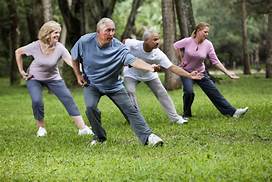The Innovation of Special Education: Meditative, Story Dance / #executivefunction #edchat #education

In special education, the ability to innovate with practical ways of developing and strengthening neural connectivity that leads to new ‘thinking pathways,’ even alternative sequences of thinking process that create new mental perspectives, is both easy and challenging. The vast majority of Special Educators are stationed within a formal classroom environment, and thus, must work within the physical parameters of the school building and the individual educational plan agreed to in team meetings. Should the Special Educator adapt to more entrepreneurial outlooks, allowing for themselves to take on a much more independent thinking style in line with that of what is known as the ‘clinical educator?’
Taking license from the entrepreneurial mode of production, clinical educators look first unto observing, reflecting, and studying how their own instructional approach, as a series of methods, strategies, mindsets, and fine-tuning of their professional relationship with those they teach, can be made better, tailored, or even discarded, if not useful. Surely, in time, successful instructional patterns that are effective and efficient are set in place and the clinical social educator enters a mode of instructional production that appears to be somewhat static and unchanging. How much ‘innovation’ is practical and demanded largely depends on how the educator works. That is to say, a self-employed Special Educator must continue to innovate in order to stay novel, whereas a school-based educator, who’s pay is fixed, enjoys a degree of guaranteed salary every month, and as such, the performance measures, though they carry similitudes, do vary in scope.
The notion of educating the whole person

Without recreating the wheel, I have carefully introduced a form of Tai-Chi dancing movement, or a very sober, meditative, mindful movement of the body to music that delivers a cognitive-physical workout, and deepens a sense of inner growth for an individual. It is my current understanding that the meditative mindset profoundly affects the practitioner from the inside-out, and the outside-in simultaneously. I see that we can then change our mental, emotional, and physical state of being through this meditative, movement therapy, making space for a new neural rhythmic story that can reverse engineer either the creation of new neural synaptic growth connections, or re-extend old ones into stronger forms, leading to increased cognitive wherewithal.
That said, I caution myself to move beyond this gentle,Tai-Chi movement therapy story dance into a full-blown practice of martial arts as an instructional method, less I serve as a catalyst for an aggressive style of teaching not in line with my own goals as a teacher and person. Hacking cognitive -physical growth through the advent of creating physical warriors is not a pursuit, but innovating with new activities that are practical, novel, and community-oriented is. Hence, though Tai-Chi itself is a gentle, martial art that is integrated by many, even senior citizens, my instructional focus on the development of the whole person, that they be themselves mindful stewards in the building of others and community, stops the forward-march of placing emphasis on ‘martial art’ as a means to harness neural connectivity, and banks on the establishment of inculcating the more gentle, meditative story dance, as a strategy that allows for a gentle mindset that is friendly to self and to others.
In that spirit, I see no foul in borrowing even from various heritages of meditative dance movement. Capoeira, the historic slave dance of African-South Americans living in Brazil hid an expansive range of physical motions according to music that takes an individual to the brink of physical self-defense, yet staying in the realm of dance. The slaves would practice such maneuvers to retain an inner liberty, and stay alert on a very internal level though they were in a state of human bondage. Such a practice led these slaves to the fortifying and maintaining of their cognitive-physical ‘wherewithal,’ and created a community of art and culture that addressed such abstract human needs as nourishing their very souls.
In my work, I do not teach Tai-Chi, nor Capoeira, but I do lightly borrow from these, as I do from Afro-Cuban salsa, and modern dance moves, all in keeping with the careful observance of what effect such innovation is having on the student. The clinical educator
in me, ever present, asks again and again, how is this helpful, where is it leading the student, how can I make it better, how can it serve to empower the individual to be a community-builder of others, and what is the goal.
in me, ever present, asks again and again, how is this helpful, where is it leading the student, how can I make it better, how can it serve to empower the individual to be a community-builder of others, and what is the goal.

Comments